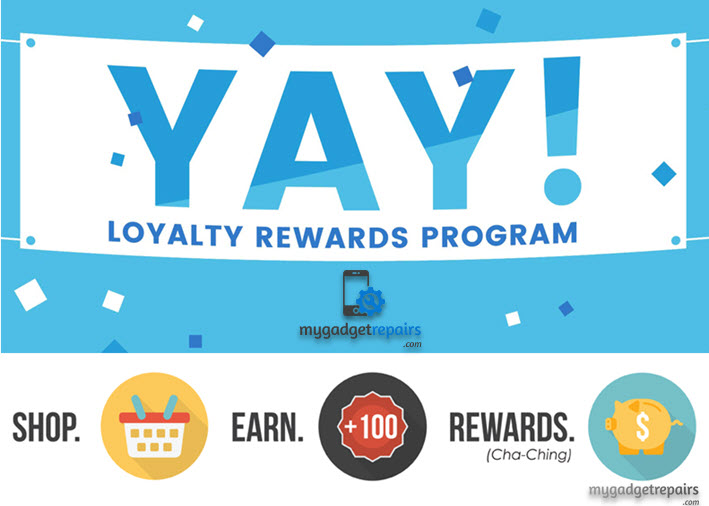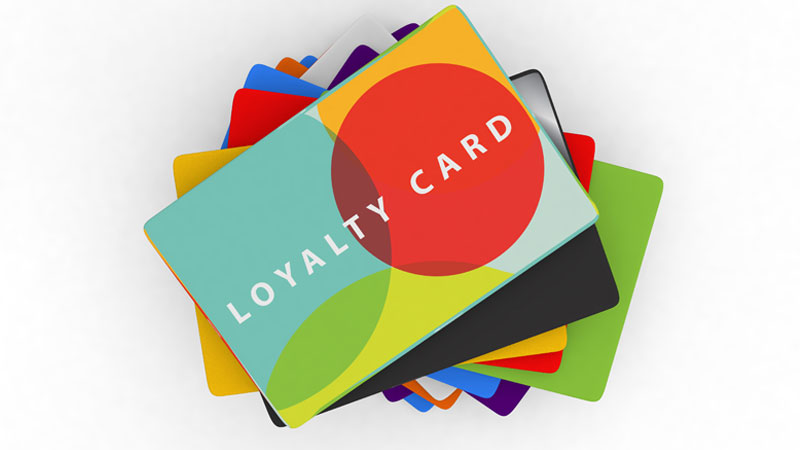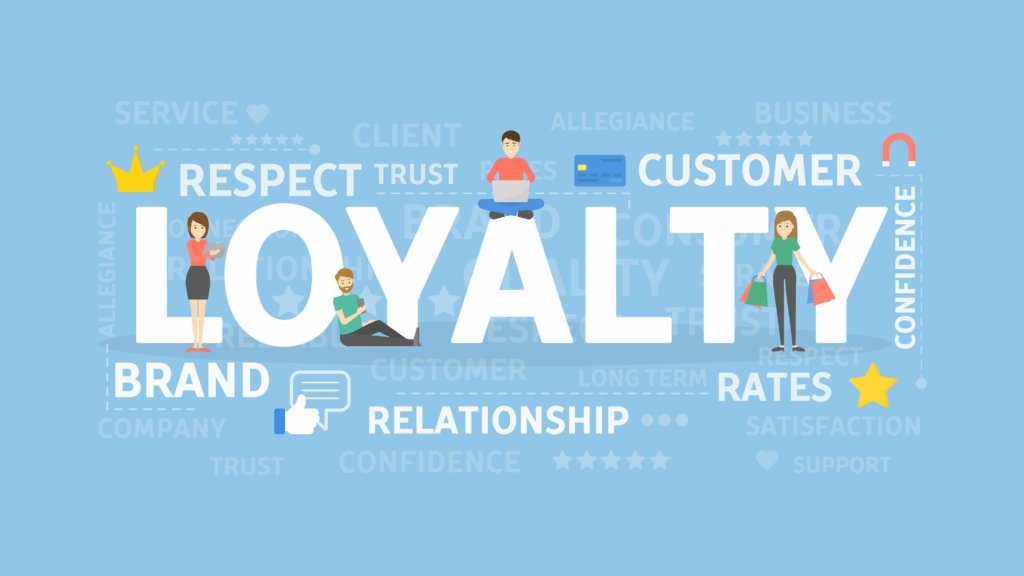All Categories
Featured
Table of Contents
In 11784, Nigel Carpenter and Carson Russell Learned About Vast Majority

What if you could grow your organization without increasing your costs? In fact, what if you could really reduce your costs but increase your sales, year after year? Would you do it? If you're a company owner, then you'll likely offer a resounding 'yes', a simple response to an even simpler concern.
A rewards program tracks and benefits certain spending behavior by the client, offering special advantages to devoted clients who continue to shop with a specific brand. The more that the consumer spends in the store, the more benefits they receive. Gradually, this reward develops devoted customers out of an existing consumer base.

Even if you already have a reward program in place, it's a good concept to dig in and completely understand what makes customer loyalty programs work, in addition to how to implement one that costs you little money and time. Don't worry, I'll assist you with that. I'll break down the primary advantages of a commitment program and the best ways to create loyal clients.
Let's dig in. Customer commitment is when a customer returns to work with your brand over your competitors and is mainly affected by the favorable experiences that the consumer has with your brand name. The more favorable the experience, the more most likely they will return to shop with you. Consumer loyalty is exceptionally essential to services since it will help you grow your business and sales faster than a simple marketing plan that focuses on hiring new consumers alone.
A couple of methods to measure consumer commitment include:. NPS tools either send out a brand efficiency study by means of e-mail or ask consumers for feedback while they are visiting an organization's site. This information can then be utilized to better comprehend the likelihood of consumer commitment. A repurchase ratio measures the ratio of repeat buyers versus one-time purchasers.
Client commitment index (CLI). The CLI tracks consumer loyalty gradually and is comparable to an NPS study. However, it considers a couple of additional elements on top of NPS like upselling and repurchasing. These metrics are then utilized to examine brand name commitment. A customer commitment program is a marketing technique that rewards clients who make purchases and engage with the brand name on an ongoing basis.
Client rewards programs are designed to incentivize future purchases. This motivates them to continue working with your brand name. Customer commitment programs can be established in lots of various ways. A popular consumer commitment program rewards consumers through a points system, which can then be invested in future purchases. Another kind of client loyalty program might reward them with member-exclusive benefits or free gifts, or it may even reward them by donating money to a charity that you and your customers are equally enthusiastic about.
In Huntley, IL, Kobe Hogan and Christopher Sutton Learned About Network Marketing
By providing benefits to your clients for being loyal and helpful, you'll build a rapport with them, deepening their relationship with your brand name and hopefully making it less likely for them to change to a rival. You've likely seen customer commitment programs in your own shopping experience, whether at your preferred coffee shops or your most frequented grocery stores.
However even if everybody is doing it doesn't mean that's an excellent adequate factor for you to do it too. The better you comprehend the benefits of a customer rewards program, the more clarity you will have as you develop one for your own shop. You won't be distracted by interesting benefits and complex loyalty points systems.
Keep in mind: work smarter, not harder. Consumer retention is the main benefit of a benefits program that acts as a foundation to all of the other benefits. As you supply rewards for your existing client base to continue to acquire from your store, you will offer your store with a stable flow of cash month after month.
By growing your retention rate, you can stop investing as much time or money on increasing your total variety of customers. Why is this crucial? Devoted clients have a higher conversion rate than new clients, suggesting they are most likely to make a transaction when they visit your store than a brand-new consumer.
By increasing your retention rate by only 5 percent, you can increase your earnings by 25 percent and as much as by 95 percent. Needless to state, your retention rate matters. Key Takeaway: If you desire to considerably increase your profits, supply incentives for your existing clients to continue to patronize your store.
And you won't have to invest cash on marketing to get them there. Customer acquisition (aka bringing in new customers) takes a great deal of effort and cash to convince total strangers to trust your brand, pertained to your shop, and attempt your products. In the end, any money made by this brand-new client is eclipsed by all of the cash invested in getting them there.
Secret Takeaway: If you wish to decrease costs, concentrate on client retention rather of consumer acquisition. When you concentrate on providing a positive tailored experience for your existing clients, they will naturally inform their good friends and household about your brand. And with each subsequent transaction, loyal consumers will tell much more individuals per transaction.
In 33442, Zaiden Stephenson and Russell Rangel Learned About Type Of Content
The very best part? Since these new customers originated from relied on sources, they are most likely to turn into faithful clients themselves, investing more typically than brand-new consumers generated by other marketing efforts. The Chase Ultimate Benefits program, for instance, offers major perks for individuals who travel a lot.
The 'supreme rewards' that Chase cardholders get consist of 2x points per dollar invested in all travel purchases in addition to primary rental automobile insurance, no foreign deal fees, trip cancellation insurance coverage, and purchase protection. For people who take a trip a lotand have disposable earnings to do sothere is a massive incentive to invest cash through the supreme benefits program.
This whole procedure makes redeeming benefits something worth extoling, which is exactly what numerous cardholders wind up doing. And to assist them do it, Chase provides a reward for that too. Key Takeaway: Make it simple for your consumers to brag about you and they will spread out the word about your buy totally free.
As soon as you get the basics down, then using a loyalty rewards app can assist take care of the technical information. Here are the actions to start with creating your client commitment program. No consumer wishes to purchase items they do not desire or need. The very same goes for your commitment program.
And the only method to tailor a tempting consumer commitment program is by thoroughly knowing your customer base. The very best method to do this? By carrying out these methods: Develop customer contact info anywhere possible. Guarantee your company is constantly constructing a detailed contact list that enables you to access existing customers as frequently and as easily as possible.

Track client behavior. Know what your customers desire and when they want it. In doing so, you can expect their wants and needs and provide them with a commitment program that will please them. Classify customer personal qualities and preferences. Take a multi-faceted method, don't limit your commitment program to simply one avenue of success.
Encourage social media engagement. Frame strategies to engage with your customers and target audience on social media. They will quickly offer you with extremely informative feedback on your items and services, allowing you to better understand what they anticipate from your brand name. As soon as you have worked out who your clients are and why they are doing organization with your brand name, it's time to choose which kind of loyalty rewards program will encourage them to stay devoted to you.
In Fort Worth, TX, Joshua Logan and Christine Hodge Learned About Customer Loyalty Program
However, the most typical consumer loyalty programs centralize around these primary ideas: The points program. This type of program concentrates on gratifying clients for every single purchase they make with points in a point system. These points can then either be utilized on future purchases or put towards some form of benefit.
The paid program. This kind of program requires consumers to pay a one-time or yearly cost to join your VIP list. Loyalty members who come from this list have the ability to access distinct rewards or member-exclusive benefits. The charity program. This type of program is a little bit various than the others.
This is accomplished by motivating them to do company with the brand name and, in return, their loyalty will be rewarded with a contribution to a charity. The tier program. This type of program focuses on increasing levels of brand name loyalty. The more faithful a customer is to a brand name, the greater tier they will climb to and the much better the benefits they will get.
This kind of program is just as it sounds, where one brand partners with another brand name to offer their cumulative audiences with unique member discount rates or offers that they can redeem while doing service with either brand. The neighborhood program. This kind of program incentivizes brand name loyalty by providing its members with access to a similar community of individuals.
This type of program is fairly comparable to paid programs, however, the membership charge happens on a regular basis instead of a one-time payment. Next, pick which client interactions you want to reward. Base these rewards around which interactions benefit your service the most. For example, to assist your service out, you can provide action-based rewards like these: Reward consumers more when doing business with your brand throughout a slow duration of the year or on an infamously sluggish day of service.
Reward customers for engaging with your brand on social networks. Incentivize particular products you are attempting to move quickly. Incentivize purchases that are over a particular dollar quantity. The concept is to make your customer commitment program as easy as possible for your customers to use. If your customer loyalty program isn't staff friendly, isn't easy to track, is too pricey to run, or isn't easy for your consumers to use or understand, then personnel and clients alike probably won't benefit from it.
To remove these barriers to entry, think about integrating a consumer commitment software application that will assist you keep top of all of these aspects of your program. Some quality customer program software include:. CandyBar is a digital punch card program. It works by tracking your consumer's purchases through an app on a computer, phone, or tablet.
In Wilmette, IL, Madelyn Trujillo and Madilyn Chambers Learned About Potential Clients
Loyalty members can then examine their rewards through text message and company owner can utilize the program to call their customers. Yotpo. Yotpo is a cloud-based client commitment platform specifically for eCommerce businesses. This software is particularly proficient at gathering every kind of user-generated content, practical for tailoring a much better consumer experience.
Loopy Commitment is a helpful customer loyalty software application for organizations that mainly utilize Google Wallet or Apple Pay as their payment platforms. The software creates a digital loyalty card that sends out push notices to their consumers' phones when they remain in close proximity to their traditional shop. Once you have actually made the effort to choose which client loyalty strategies you are going to implement, it's time to begin promoting and signing up your first commitment members.
Usage in-store advertisements, incorporate call-to-actions on your website, send out promos by means of e-mail newsletters, or upload advertising posts on social networks to get your customers to sign up with. It is very important to understand the main advantages of a consumer rewards program so that you can produce a personalized experience for both you and your customer.
Believe about it. You understand what kinds of items your customers like to buy however do you know what brings them back, day after day, week after week? What makes them choose your shop over the store across the street? What makes them your consumer and not the customer of your most significant competitor? Surprisingly, the responses to these questions don't boil down to discount rate prices or quality items.
Table of Contents
Latest Posts
Awwwards - Website Awards - Best Web Design Trends Tips and Tricks:
Web Design Vs. Web Development - Upwork Tips and Tricks:
Learning Web Design: A Beginner's Guide To Html, Css ... Tips and Tricks:
More
Latest Posts
Awwwards - Website Awards - Best Web Design Trends Tips and Tricks:
Web Design Vs. Web Development - Upwork Tips and Tricks:
Learning Web Design: A Beginner's Guide To Html, Css ... Tips and Tricks: